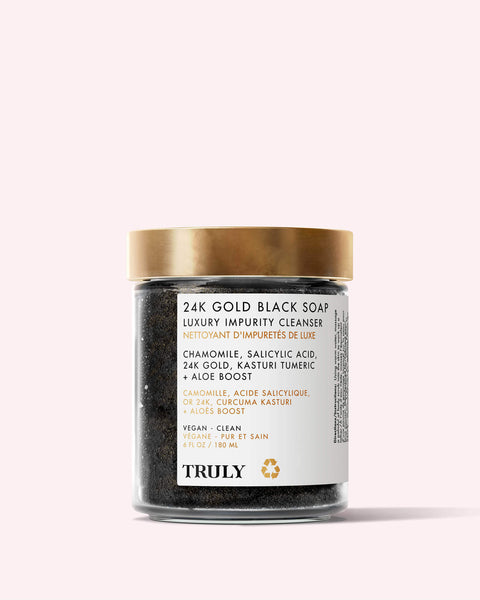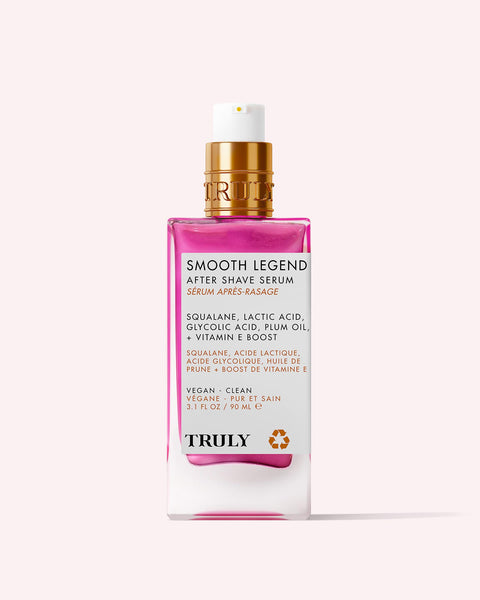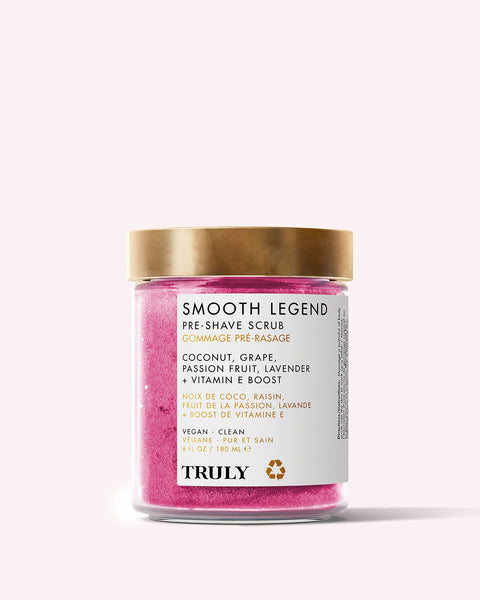How to Get Rid of Dry Patches on Your Face

Dry skin? We show you how to get rid of dry patches on face in just a few steps for a soft, supple, and radiant complexion.
Dry patches on skin is a common concern, especially in the winter months. Between the cold, dry air, low humidity, and hot showers, you wind up with dry, itchy, flaky skin. Sometimes, your daily moisturizer just isn’t enough to diminish the dryness.
Ahead, we show you how to get rid of dry patches on your face including the best skincare products for maximum hydration and glow-enhancing effects.
How to Get Rid of Dry Patches on Face
Simple changes and additions to your daily skincare routine can help to alleviate dry patches on face. Here are our top tips for treating dry patches on your skin.
1. Use a Cleansing Balm
Turns out, your cleanser might be the culprit behind your dry, itchy skin. Some soaps and cleansers contain harsh chemicals that can strip the skin of its natural oils, leading to dry skin patches. Avoid harsh soaps and opt for a gentle cleanser for daily cleansing.
Cleansing balms are a great choice. They contain hydrating, nourishing ingredients that gently remove makeup and impurities without drying out or irritating the skin. People with dry skin, sensitive skin, or skin conditions like eczema will especially benefit from cleansing balms.
Try Truly’s ultra-gentle and hydrating Glass Skin Cleansing Balm. It’s formulated with jojoba oil and niacinamide to balance oil, deeply cleanse the skin, and leave you looking fresh and dewy. It’s also fragrance-free, making it perfect for sensitive skin types.
2. Gently Exfoliate
Exfoliation can be a real gamechanger when it comes to how to get rid of dry patches on face. You don’t want to overdo it as that can make dryness worse. Aim to exfoliate 1-2 times per week to remove the buildup of dead skin cells to reveal smooth, glowing skin.
Gently exfoliating your skin with a delicate scrub or chemical exfoliant (like ahas or bhas) instantly brightens and improves skin texture. Plus, the active ingredients in skincare products penetrate better when the dead cells are removed.
Try Truly’s 24K Gold Black Soap Luxury Cleanser which gently buffs away dry patches and smooths scaly skin with its sugary base and boost of salicylic acid.
3. Apply Moisturizer to Damp Skin
Face creams, serums, and lotions all work best when applied to damp skin. It helps to trap moisture into the skin for long-lasting hydration. Especially when you’re using a humectant product like hyaluronic acid, which relies on water to draw moisture into the skin and keep it plump and hydrated.
Applying these products to damp skin ensures they have the water they need to perform effectively. To maximize the benefits, lightly pat your skin dry after cleansing so it’s not dripping, but still retains some moisture. Then, immediately apply your moisturizer or serum to lock in that hydration and achieve a healthy, dewy glow.
Try Truly’s Glass Skin Facial Serum which intensely hydrates and soothes dry, irritated skin with its cooling blend of aloe, jojoba oil, and probiotics. It leaves skin instantly fresh and dewy while minimizing the appearance of large pores.
4. Opt for Multiple Moisturizers
For optimum hydration, dermatologists recommend applying more than one moisturizer. After cleansing, apply a hydrating face serum followed by a face cream to seal in the moisture. Together, they work in tandem to intensely hydrate the skin and diminish dry patches on face.
Choose products with emollients and humectants like coconut, grapeseed oil, vitamin E, shea butter, jojoba oil, glycerin, hyaluronic acid, and ceramides. Besides softening and smoothing the skin, they help support the skin barrier for glowing, healthy skin.
Try Truly’s Glazed Donut Skin Set which features an ultra-hydrating face serum and cream to drench skin in long-lasting moisture for a glossy, luminous glow with a rejuvenating blend of coconut, grape, and vitamin E.
5. Switch Hot Showers for Lukewarm Ones
As much as we love hot showers in the cold weather, hot water can wreak havoc on the skin. By removing naturally occurring oils, those steamy hot showers you love leave your skin dry and dehydrated.
Alongside reducing the temperature of your shower, the American Academy of Dermatology suggest reducing your time in the shower to 5-10 minutes. This is to avoid overexposure to water, which can also dry out your skin and contribute to flaking.
Interestingly, one of the most common causes of dry skin on face is hot showers and baths. Especially if you already have dry skin, showering in hot water is the absolute worst thing you can do for your skin.
6. Invest in a Humidifier
Low humidity may be causing your dry skin patches. To counteract this, use a humidifier in the rooms where you spend most of your time. Humidifiers add moisture to the air, helping to prevent dry patches on face.
Alternatively, place a bowl of water in the room to add moisture to the air while avoiding the risk of bacteria and fungal buildup in the air.
What Causes Dry Patches on Face?
Dry patches on facial skin can occur due to a variety of reasons, ranging from environmental factors to medical conditions and lifestyle choices. Understanding the underlying cause is crucial for selecting the most effective treatment plan and preventing further irritation. Below are the common causes of dry patches on skin.
Environmental Factors
During the winter months, dry air and low humidity levels can strip the skin of its natural moisture. This lack of hydration can lead to rough, flaky patches, especially if the skin is not adequately protected with moisturizers.
Additionally, prolonged exposure to the sun can compromise the skin’s protective barrier. This damage not only accelerates water loss from the skin but can also lead to long-term dryness and sensitivity if unprotected by sunscreen.
Medical Conditions
Atopic Dermatitis (Eczema): This chronic skin condition is often associated with an overactive immune response. It commonly presents as dry, itchy, and inflamed patches, particularly in areas like the cheeks or around the mouth.
Psoriasis: Psoriasis is an autoimmune disorder where the skin’s cells multiply at an accelerated rate. This results in a buildup of dead cells, forming thick, scaly, and often dry patches that can be itchy or uncomfortable.
Seborrheic Dermatitis: Typically affecting areas with a high concentration of oil glands, such as around the nose, eyebrows, and scalp, this condition is characterized by yellowish, flaky, or greasy patches that are prone to dryness.
Contact Dermatitis: When the skin comes into contact with allergens or irritants, such as certain fragrances, detergents, or metals, it can develop localized dry and itchy patches. Identifying and avoiding the trigger is key to managing this condition.
Lifestyle and Product Choices
Frequent use of products containing alcohol, strong exfoliants, or drying ingredients can strip the skin of its natural oils. This leaves it vulnerable to dry patches on face. What’s more, daily exposure to irritants, such as strong detergents can also compromise the skin barrier and result in localized dryness.
Dry patches on your face can be managed with the right combination of skincare products, home remedies, medical treatments, and preventive measures. By addressing the underlying causes—whether environmental factors, allergens, or medical conditions—and adopting a thoughtful skincare routine, you can achieve smooth, hydrated, and healthy skin.
Remember, consulting a board-certified dermatologist is always a good idea if you’re unsure about the best course of action for your specific situation.
Now that you know how to get rid of dry patches on face, shop our bestselling skincare sets for smooth, radiant skin.
Feature Photo by KoolShooters, Pexels
















